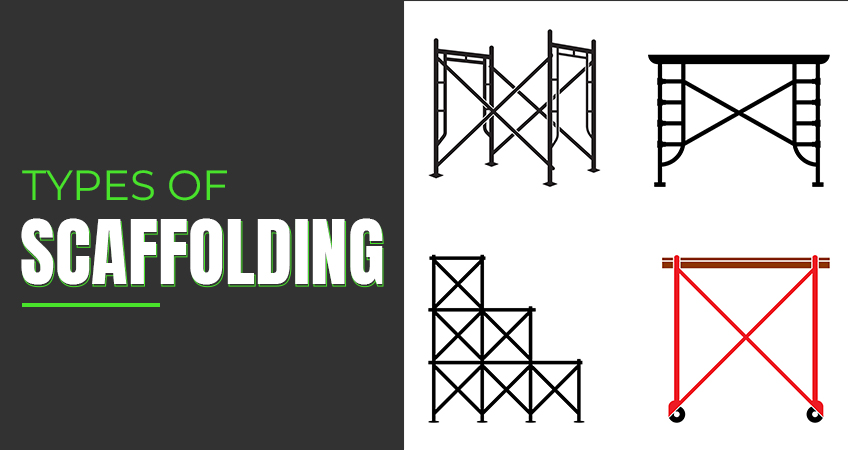When it comes to renovating your home, having the right scaffolding can make all the difference. Not only does it provide the safety infrastructure necessary to carry out high-level construction projects, but it also offers the versatility needed for various projects.
Whether you’re revamping the façade of your house or adding a new extension, choosing the right scaffolding is key to both safety and efficiency.
This guide sheds light on the range of scaffolding types available, courtesy of B-Mat Scaffolding, a leading expert in the field.
Understanding the basics of scaffolding
What is scaffolding?
Scaffolding is a temporary structure used to support a work crew during construction, maintenance, or repair projects. It is comprised of both vertical and horizontal components and is designed to provide a safe and practical working platform to access difficult or high areas. Choosing the right scaffolding is crucial for ensuring the safety and efficiency of your project.
Scaffolding allows builders and renovators to reach heights that standard ladders can’t easily or safely accommodate. Its purpose is twofold—providing access to work areas and ensuring the safety of workers involved in the project. Understanding its basic structure and deployment helps in selecting the most effective scaffolding for your needs.
Overview of scaffolding types
Navigating through the different types of scaffolding can be a challenge for those new to construction. Each type of scaffolding system serves a distinct purpose and offers unique benefits depending on the requirements of your renovation project.
Here’s a detailed overview of some common scaffolding types you might consider for your home renovation:
Single scaffolding
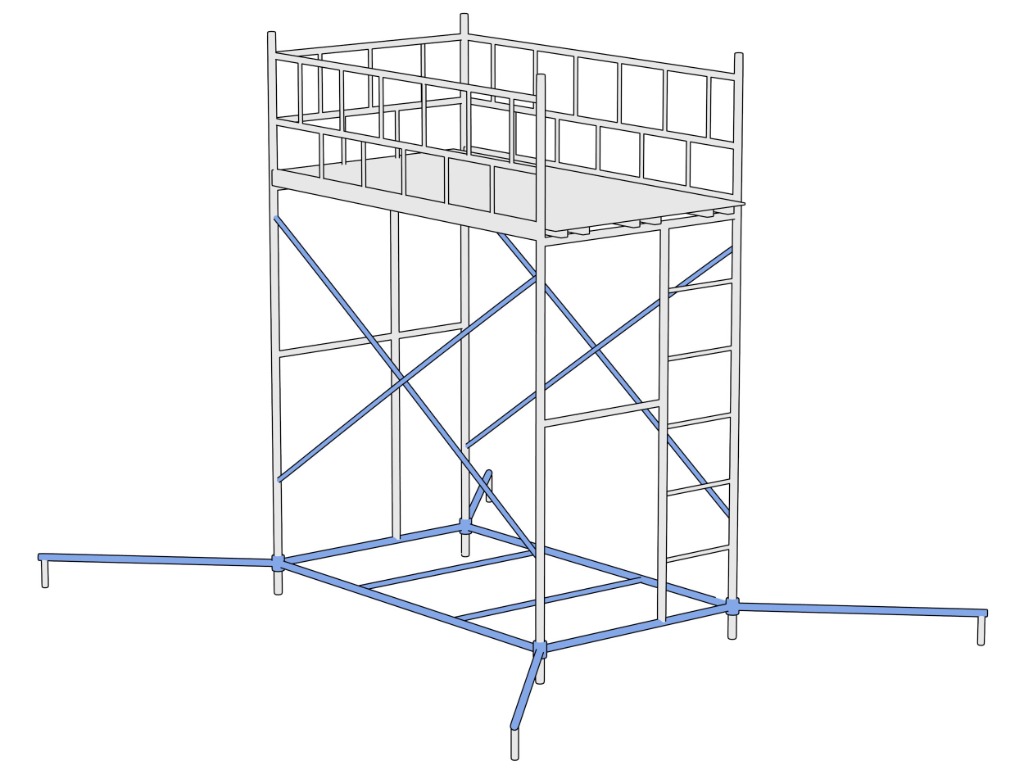
Single scaffolding, also known as brick layer’s scaffolding, consists of a single row of poles that are set against the wall and tied together with horizontal members, also known as putlogs. It is typically used for brick masonry work, providing ample support while maintaining ease of setup.
Double scaffolding
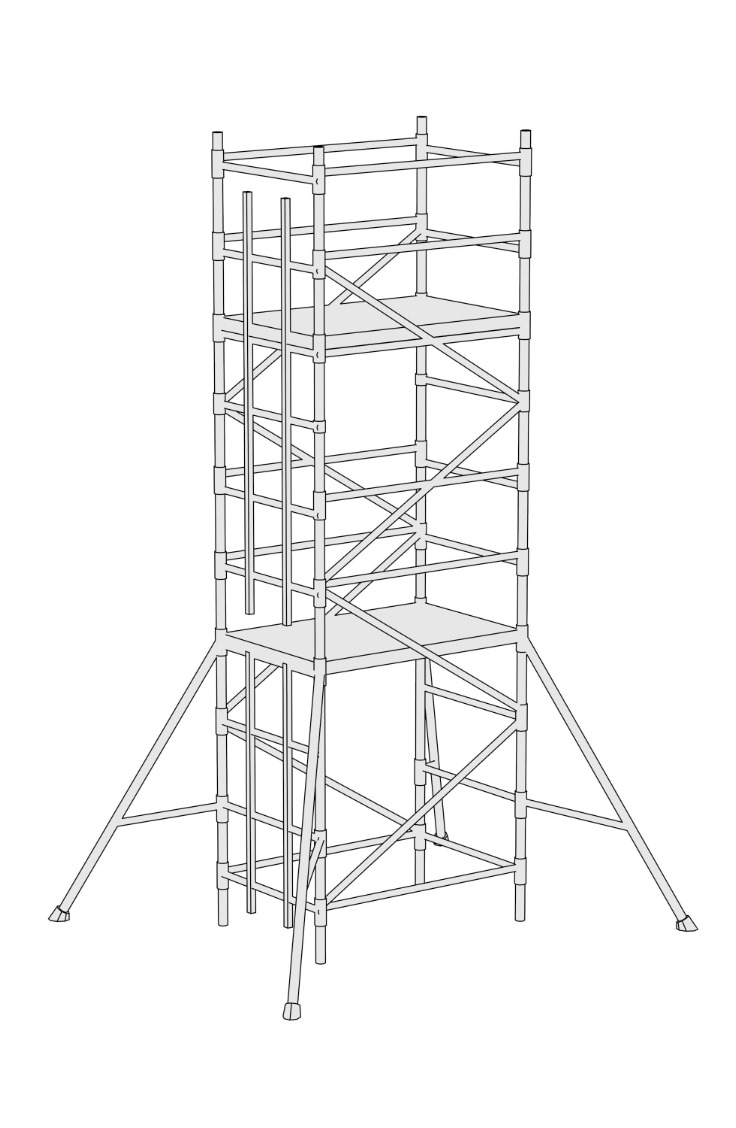
Double scaffolding, or independent scaffolding, involves two rows of poles set parallel to each other with the first one near the wall. It offers stronger support than single scaffolding, making it ideal for stone masonry work where the surface is less receptive to stability interventions.
Cantilever scaffolding
Cantilever scaffolding is employed in situations where the ground cannot support standards or where access is needed to the side of a building that is obstructed. It is anchored into walls and often used in narrow or high-volume traffic areas.
Suspended scaffolding
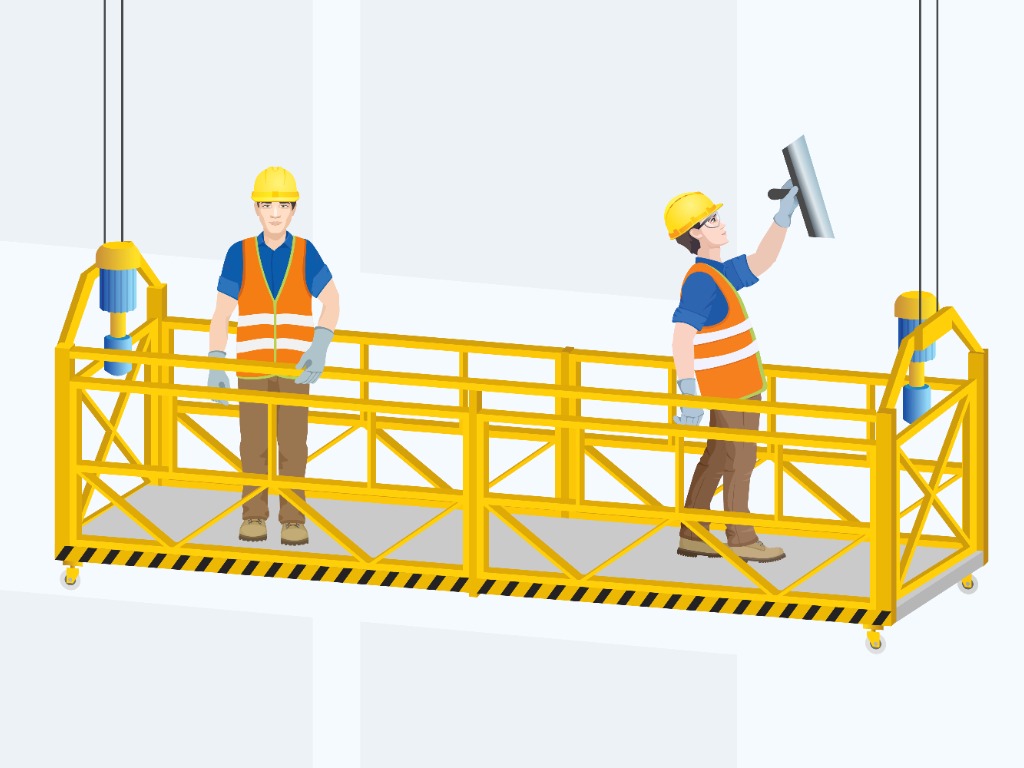
Suspended scaffolds consist of platforms suspended by ropes or chains from the roof, making it perfect for painting and cleaning projects on tall buildings. The platform can be raised or lowered by the construction workers as needed, offering excellent flexibility without erecting scaffolding from the ground.
Ladder scaffolding
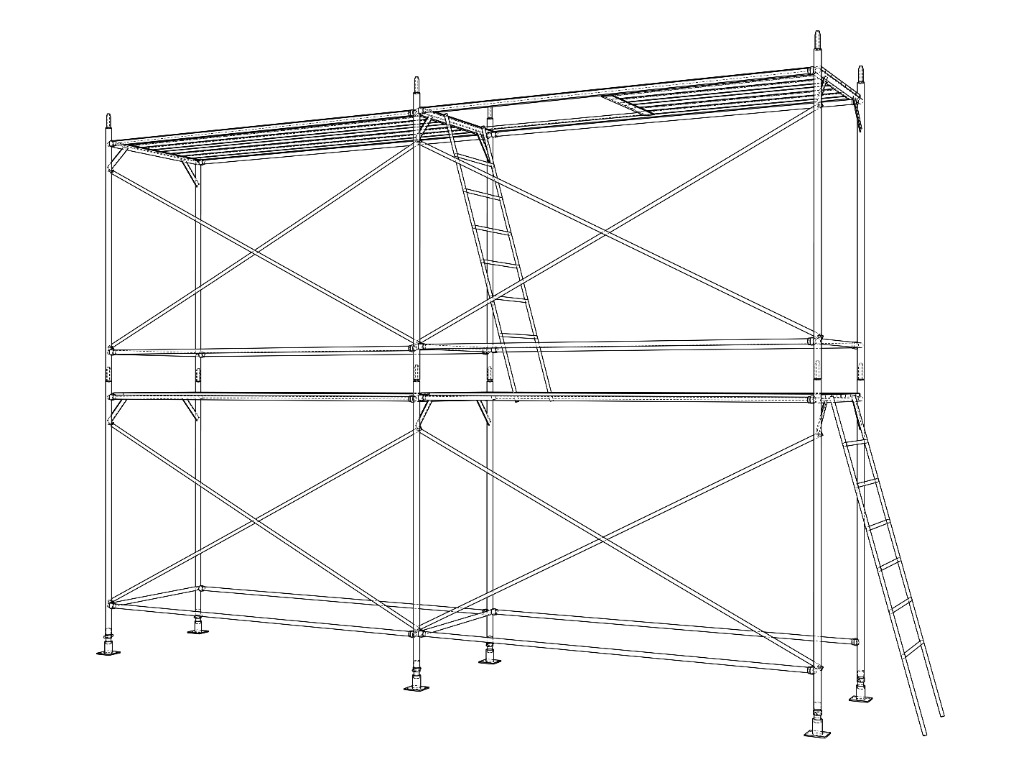
Ladder scaffolding (also known as trestle scaffolding), supported on ladders or tripods, is generally used for light work in rooms. Its portability and ease of setup make it ideal for interior projects such as painting and light repairs.
Rolling scaffolding
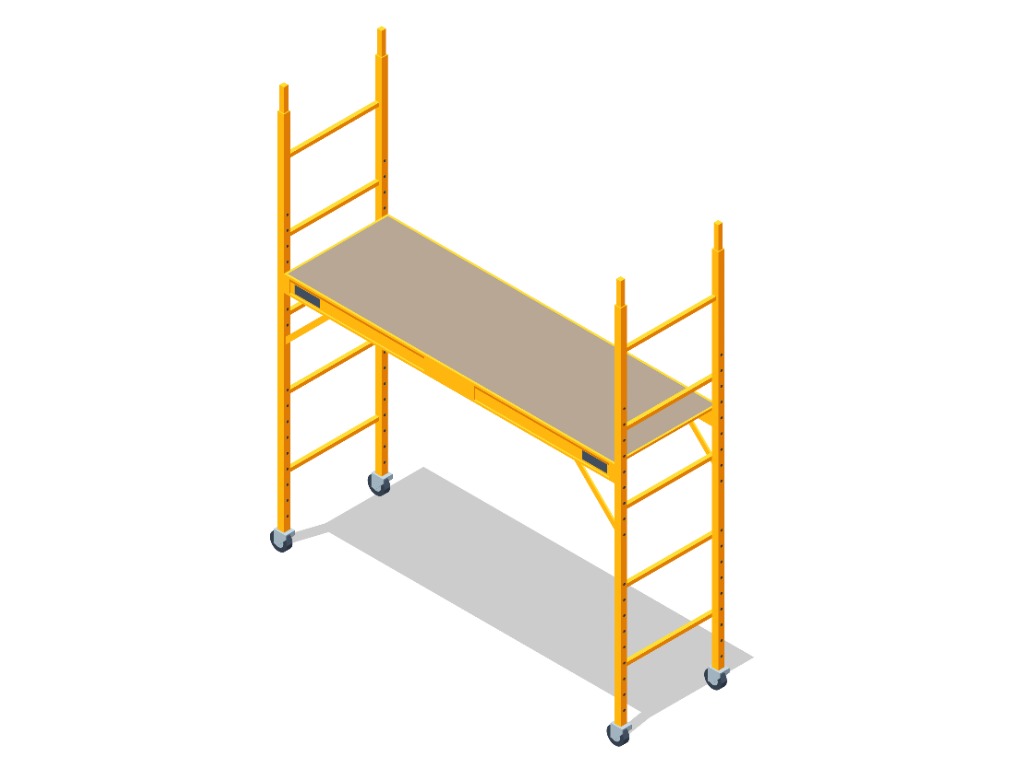
Rolling scaffolding features wheels or casters, allowing the entire setup to be moved as needed. It is used for tasks that require frequent repositioning, such as plastering or electrical work, offering increased mobility and convenience.
Tube & clamp scaffolding

Tube and clamp scaffolding, also known as needle scaffolding, involves metal tubes fixed together with clamps. The adaptability of the system allows construction on complex shapes and designs, making it a favourite for irregularly shaped buildings.
System scaffolding
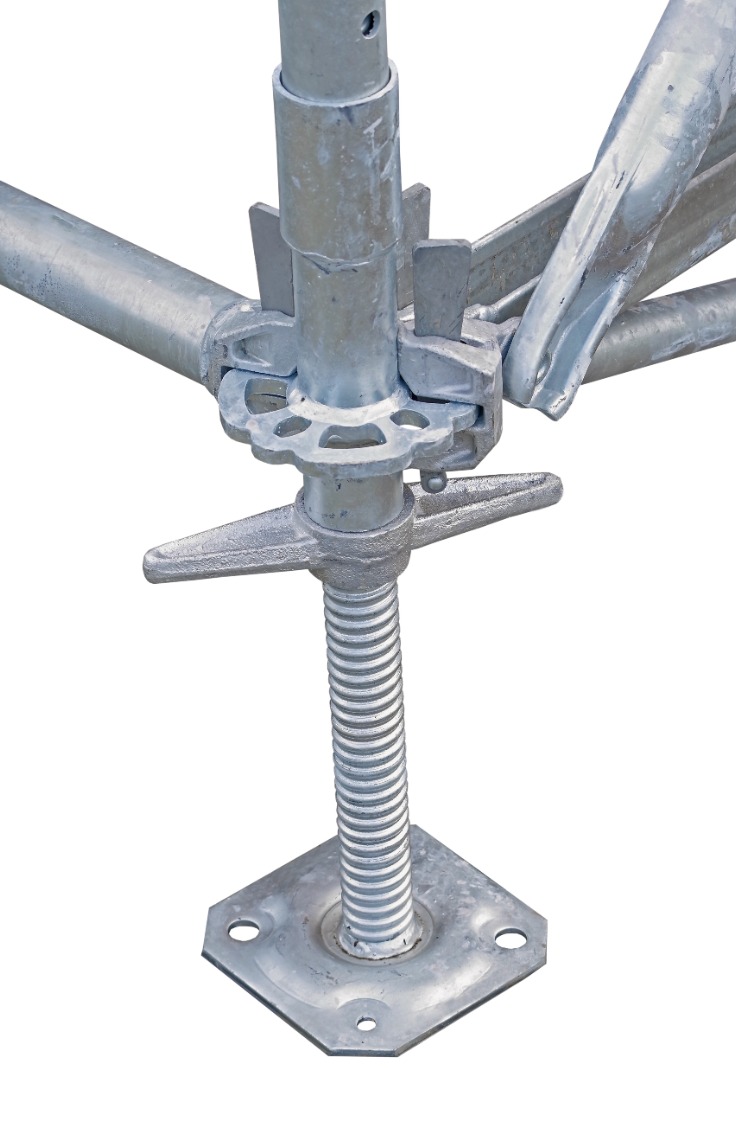
Known for its modular design, system scaffolding provides a versatile construction option suitable for a wide variety of structures. Most system scaffold manufacturers produce pre-fabricated components to allow for quick setup and take-down, saving time on your project.
Modular scaffolding options can include:
Cuplock scaffolding
Cuplock scaffolding is a scaffolding structure known for its easy assembly. With its unique locking mechanism, it is widely used in large projects that require quick setup and safety, from bridges to industrial buildings.
Kwikstage scaffolding
Kwikstage scaffolding is a robust system of wedge fixing that provides a rigid setup. Its versatility makes it suitable for numerous applications, offering a stable platform for a variety of trades.
Staircase tower scaffolding
Staircase tower scaffolding provides easy and safe access to higher levels, particularly in towers or multistory buildings. This type is perfect for projects requiring consistent movement between levels, offering increased safety with integrated staircases.
Frame & brace scaffolding
Frame and brace scaffolding is easy to erect and provides multiple levels of working platforms. Though not as durable as systems scaffolding, it remains favoured for smaller projects due to its lighter weight and simplicity.
Mast climbing scaffolding
Mast climbing scaffolding allows for modular height adjustments, which is particularly beneficial when working on tall structures. It offers a stable and efficient platform when constant height adaptation is required.
Shoring
Shoring refers to the use of scaffolding to support structures temporarily. It is often seen during renovations where parts of the structure may be unstable during the process, protecting both workers and the building.
Equipment and additional tools used with scaffolding construction projects.
Lifts and safety equipment are essential for efficient and safe scaffolding use. Hoists, pulleys, and lifts make moving materials easier, saving time and labour. Safety harnesses, guard rails, and toe boards are additional items that ensure safe workspace conditions.
Importance of local guidance and rental options for a temporary structure
Consulting with experts like B-Mat Scaffolding can provide valuable insights that simplify the selection process. Local scaffolding experts understand specific geographical challenges and regulatory requirements, ensuring smoother project execution. B-Mat offers a range of rental options to fit any project need across the UK.
FAQ
Q: Is all scaffolding made of steel?
No, not all scaffolding is made of steel. While steel scaffolding is the most common, scaffolding can also be made from aluminium or wooden poles. The material used will vary based on the requirements of the construction project.
Q: Can I set up scaffolding on my own?
It is recommended to seek professional assistance when setting up a scaffolding system to ensure proper construction and safety measures are followed. There are also a number of legal considerations when it comes to setting up temporary structures, therefore the safest option is to rely on the expertise of a professional scaffolding company to ensure you have correct and properly supported scaffolding.
Q: How long does it take to set up scaffolding?
The time it takes to set up scaffolding will vary depending on the type and size of the structure. Generally, it can take anywhere from a few hours to a full day.
The final word on choosing the right scaffolding
Understanding the different types of scaffolding helps make informed decisions for your home renovation projects. It ensures safety, efficiency, and satisfaction with your chosen scaffolding solution.
Consulting with local experts and rental options can further streamline the process, setting you up for a successful renovation project. With the right scaffolding in place, your home renovation will be well-supported and completed with ease.
Enjoy the most competitive prices with a free quote from B-Mat Scaffolding
B-Mat Scaffolding is here to offer expert advice and a free quote tailored to your specific project needs. With our experienced team, we’ll help transform your renovation vision into reality, ensuring safety and efficiency at every step.
Whether it’s a residential upgrade or a large-scale commercial project, trust us to support your construction journey from start to finish.


